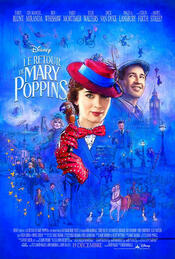|
Last night I saw Mary Poppins Returns (2018) at the theatre. It was released nearly a month ago in the U.S. and so far has made over US$259 million at the worldwide box office. In terms of women's presence and voice it scores well. It passes the Bechdel test (a test that serves as an indicator of the active presence of women in movies) early on and boasts seven named female characters, six of whom appear in more than one scene, as well as the 'Balloon Lady', played by Angela Lansbury, who has several lines. This is more female characters than most movies have. It is also devoid of violence against women (VAW) and the silencing of women, as far as I can remember—for once I was not taking notes. Moreover, I don't remember any intergenerational hostility, which is common enough nowadays. However, the new Mary Poppins, Emily Blunt, was more sexualized than Julie Andrews was. Still, I wouldn't hesitate to let my six-year-old girl watch this if I had a six-year-old girl. Mary Poppins Returns is the least sexualized movie I've analysed in a while. I look forward to sharing my findings about the inclusions/exclusions of mainstream movies of the 20th and 21st centuries in my upcoming film guide for women.
© 2019 Alline Cormier
0 Comments
Leave a Reply. |
Categories |


 RSS Feed
RSS Feed